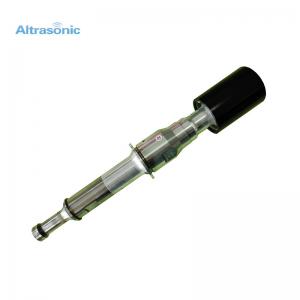20kHz Ultrasonic Processor To Accelerate Dissolution Chemical Reaction Synthesis
Add to Cart
20kHz Ultrasonic Processor To Accelerate Dissolution Chemical Reaction Synthesis Oil-Water Emulsification
20kHz Ultrasonic Processor To Accelerate Dissolution Chemical
Reaction Synthesis
Oil-water Emulsification
Introduction:
Ultrasonic homogenization uses the cavitation and other physical
effects of ultrasound in the liquid to achieve homogenization.
Physical action refers to the fact that ultrasonic waves can
effectively agitate and flow in the liquid to destroy the structure
of the medium and smash the particles in the liquid. The main
reason is that the collision between liquids, microphase flow and
shock waves cause the surface morphology of the particles to
change.
Cavitation means that under the action of ultrasonic waves, the
liquid produces cavities, namely small bubbles, in places where the
strength is weak. The small bubbles pulsate with the ultrasound,
and the cavities will collapse within one sound cycle. Ultrasonic
cavitation also produces a strong mechanical effect, which produces
fast jets or acoustic impulses near the solid interface, and
produces powerful shock waves in the liquid.
Characteristics:
1. Ultrasound probe is imported titanium alloy material, durable
2. Energy-efficient transducer to ensure a strong effect
3. Amplitude automatic adjustment, the load situation of the different amplitude consistent
4. Working hours, ultrasound can set the interval
5. Microcomputer control, ultrasonic power continuously adjustable
6. Integrated sample temperature control to prevent overheating
7. Speakers are separated by a special sound insulation, sound insulation
Applications:
1. Disruption of cells, bacteria and tissues
2. Adjustment of ribosome
3. Cutting of actinomycetes and fungal threads
4. Acceleration of a chemical reaction
5. Extraction of special components by disruption of tissue
fragments,
6. Emulsification and dispersion in samples (a mixture of liquids
such as water-oil, water-silver, etc.), and Insatiable Pursuit of
High Grade Design for More Efficient Energy Conversion can achieve
a high energy conversion efficiency which generates almost no heat.
A unique circuit and a structure adopted in the design to minimize
the power loss can control heat generation of the converter which
may disturb the oscillation effect of ultrasonic waves and have
adverse influence on the sample.




